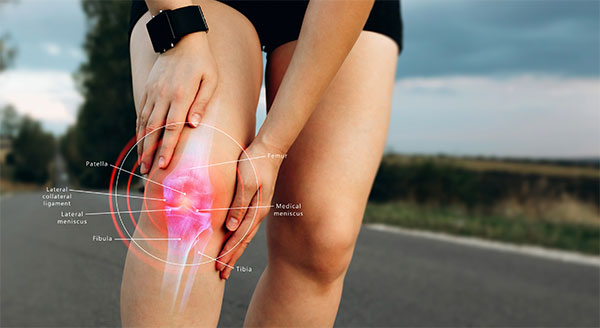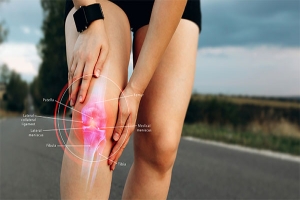
Knee arthritis in the medial compartment is one of the most common causes of knee pain. Below is a list of 9 causes of “ medial” knee pain, some are secondary to degenerative while others are secondary to trauma.
- Knee Arthritis Medial Compartment : Knee arthritis in the medial compartment refers to the degeneration or wear-and-tear of the cartilage in the medial (inner) compartment of the knee The knee joint has three main compartments: the medial compartment (inner knee), the lateral compartment (outer knee), and the patellofemoral compartment (where the knee cap meets the thigh bone). Arthritis affecting the medial compartment is common because this area typically bears more weight and undergoes more stress than the lateral compartment. This condition is most commonly a form of osteoarthritis, which is a degenerative joint disease. It results from the breakdown of joint cartilage and the underlying bone, often due to aging, wear and tear, or mechanical stress.
- Medial Meniscus Tear : A medial meniscal tear is an injury to the medial meniscus, which is a C-shaped piece of cartilage located in the knee joint, on the inner side of the The meniscus acts as a shock absorber and stabilizer, cushioning the joint and distributing weight across the knee. Medial meniscal tears can occur in various ways, often related to sports or physical activity, but they can also result from degenerative changes in the knee, especially in older adults.
- Medial Meniscal Cyst : A medial meniscal cyst is a small, fluid-filled sac that can develop near the medial meniscus of the Meniscal cysts typically arise as a result of degeneration or a tear in the meniscus. When the meniscus is damaged, synovial fluid from inside the knee joint can leak out and form a cyst.
- Medial Collateral Ligament Sprain
- Pes Tendonitis : Also known as pes anserine tendonitis, is an inflammatory condition affecting the pes anserine bursa and tendons on the inner side of the The term " pes anserine" refers to the conjoined tendons of three muscles: the sartorius, gracilis, and semitendinosus, whom attach to the shinbone (tibia) just below the knee joint.
- Medial Plica : A medial plica is a fold of synovial tissue in the knee Synovial plicae are remnants of embryonic development and are present in many knees as small, thin, and flexible folds of tissue. Most people have synovial plicae, but they usually do not cause any problems and may not even be noticed. However, in some cases, a plica can become i rritated, inflamed, or thickened, leading to knee pain and discomfort.
- Tibia Subchondral Insufficiency Fracture
- Tibia Plateau Fracture : A tibia plateau fracture refers to a break in the upper part of the tibia (shinbone) that involves the knee joint.
- Medial Femoral Condyle Fracture : A medial femoral condyle fracture refers to a break in the medial (inner) part of the distal end of the femur (thighbone) at the knee joint. The medial femoral condyle is particularly important as it bears a significant portion of the body' s weight during activities like walking and running.
Dr. Eddie El-Yussif is a Board-Certified Fellowship-Trained Orthopedic Surgeon and Fellow of the American Academy of Orthopaedic Surgeons specializing in Knee Surgery at Henry Ford Health, serving the greater Detroit area.


